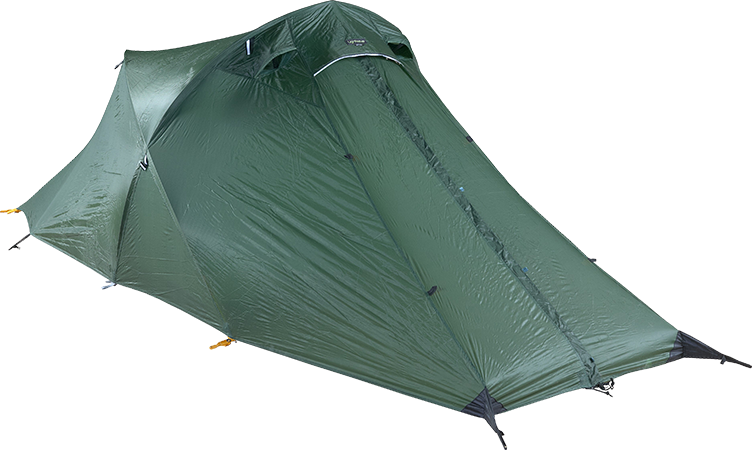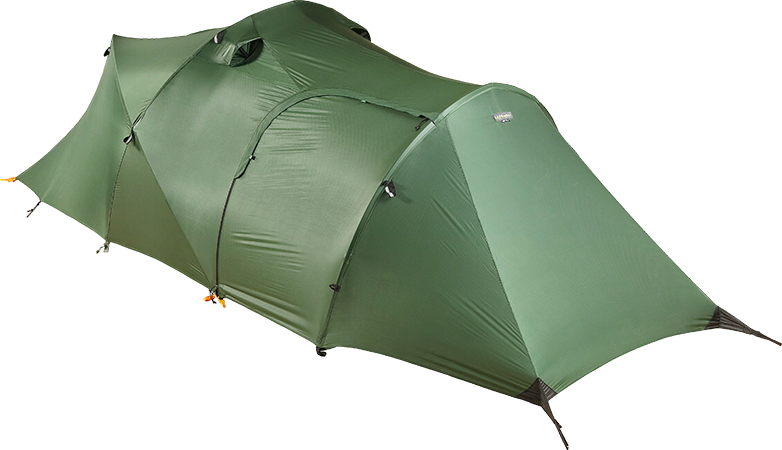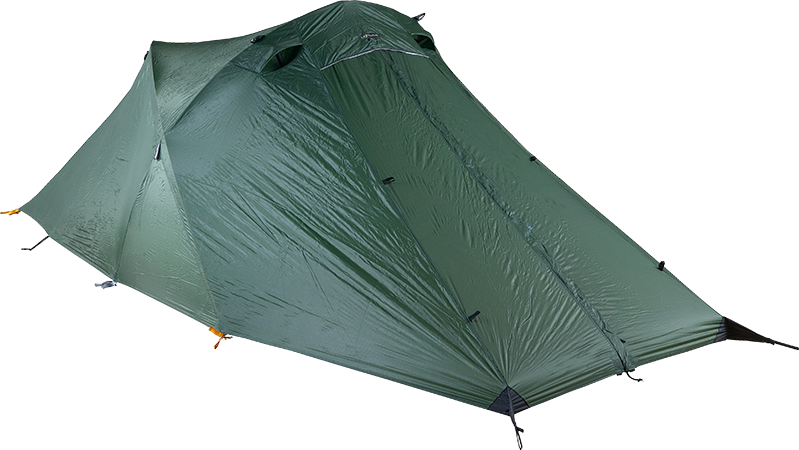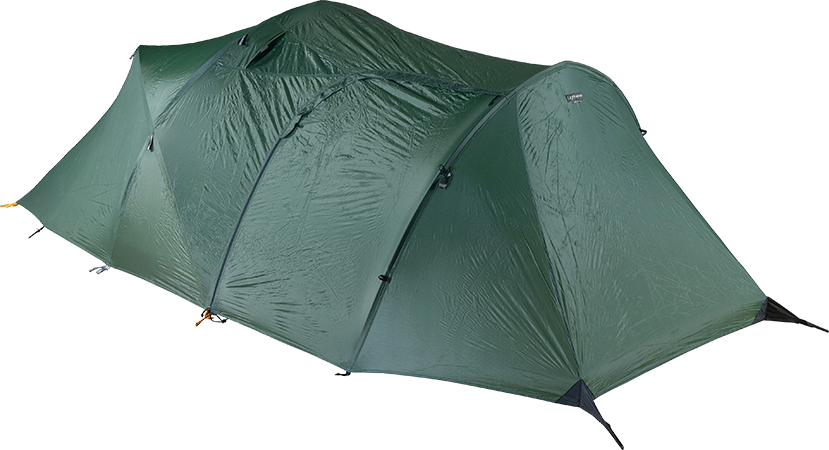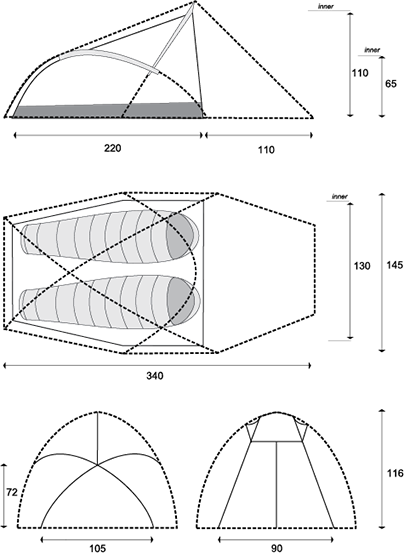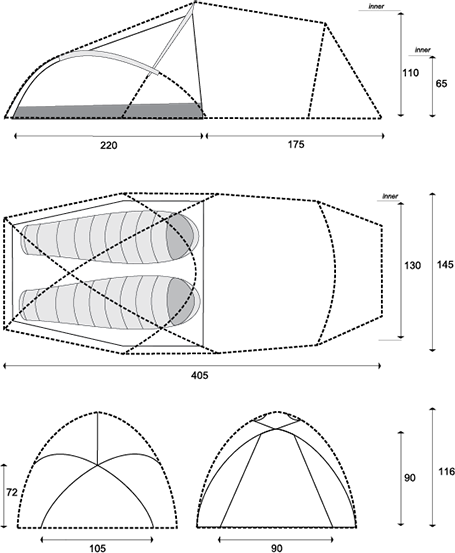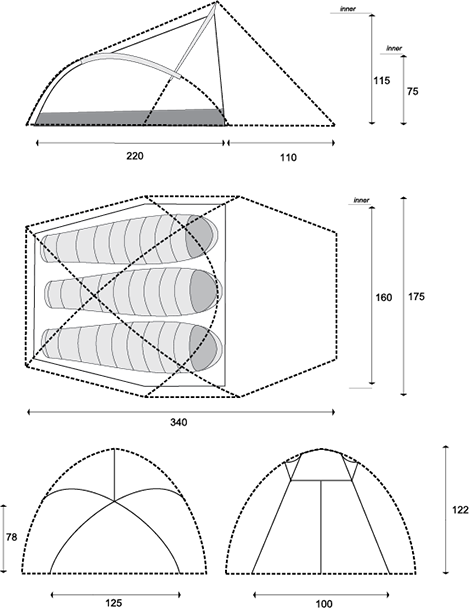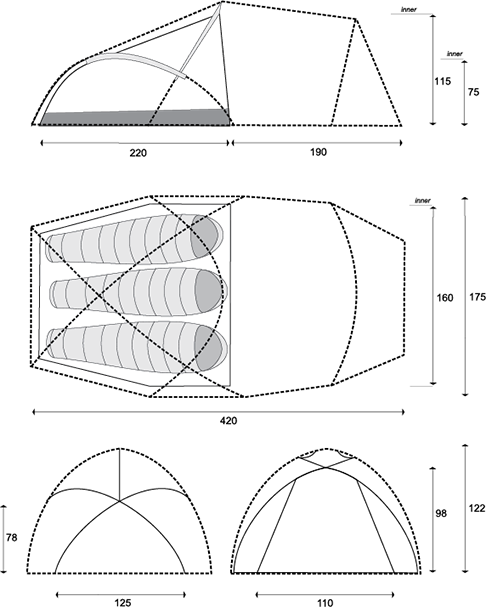Flysheet
70 g/m2, 40d nylon 6.6 ripstop, silicone-coated both sides, 5000 mm hydrostatic head
The trek flysheet is made from 40-denier nylon, which strikes an excellent balance between weight and strength. Like all Lightwave tent flysheets, it uses high-tenacity nylon 6.6 yarn (which has a higher tensile strength than normal nylon) and is silicone-coated on both sides (for water-resistance). Silicone coatings maintain the inherent strength of the fabric, whereas the conventional polyurethane (PU) coatings typically used on most tents reduce the tear strength by up to 70%.
Groundsheet
135 g/m2, 150d polyester taffeta, 3-pass PU-coated
(90 g/m2, 70d polyester taffeta, on the t10 trek & t10 trek xt)
5000 mm hydrostatic head, factory-taped seams
The trek groundsheet is made from a very robust 150-denier polyester (except on the compact t10 models which use a 70-denier nylon). This is an area where many tents use 110-denier or even 70-denier fabrics to save weight and keep manufacturing costs down. For the user, however, this can be a false economy, since lighter groundsheets often need the additional reinforcement of a footprint (a separate layer of fabric between groundsheet and ground), which adds up to an even heavier tent as well as extra cost.
Inner canopy
45g/m2, 40d nylon 6.6 ripstop, DWR treated
Poles
DAC 9.00mm 7001-T6 Pressfit aluminium alloy
Trek poles are made of the same 7001-T6 alloy employed in probably 90% of all backpacking tents in the world. Whilst there are lighter alloys around, we always come back to the 7001 series because it is so reliable and resilient. Given that 90% of customer service on tents involves pole replacements, the 7001 poles give both us and our customers the least amount of hassle.
Pegs
Lightning pegs, 11 g each, square section
Pegs are very important – without them, no tent could withstand anything more than the slightest breeze. Trek tents use our Lightning peg – similar in weight to most standard pegs, but substantially stronger and capable of living with some serious abuse. Costing four times as much as normal wire pegs, these are seldom seen on all but the most highly specified and expensive tents.
Guylines
3.00 mm nylon, 3 m length, Linelok adjusters
Trek guylines are made of standard 3.0 mm nylon. They work, and with our Linelok adjusters they work and adjust very well.
